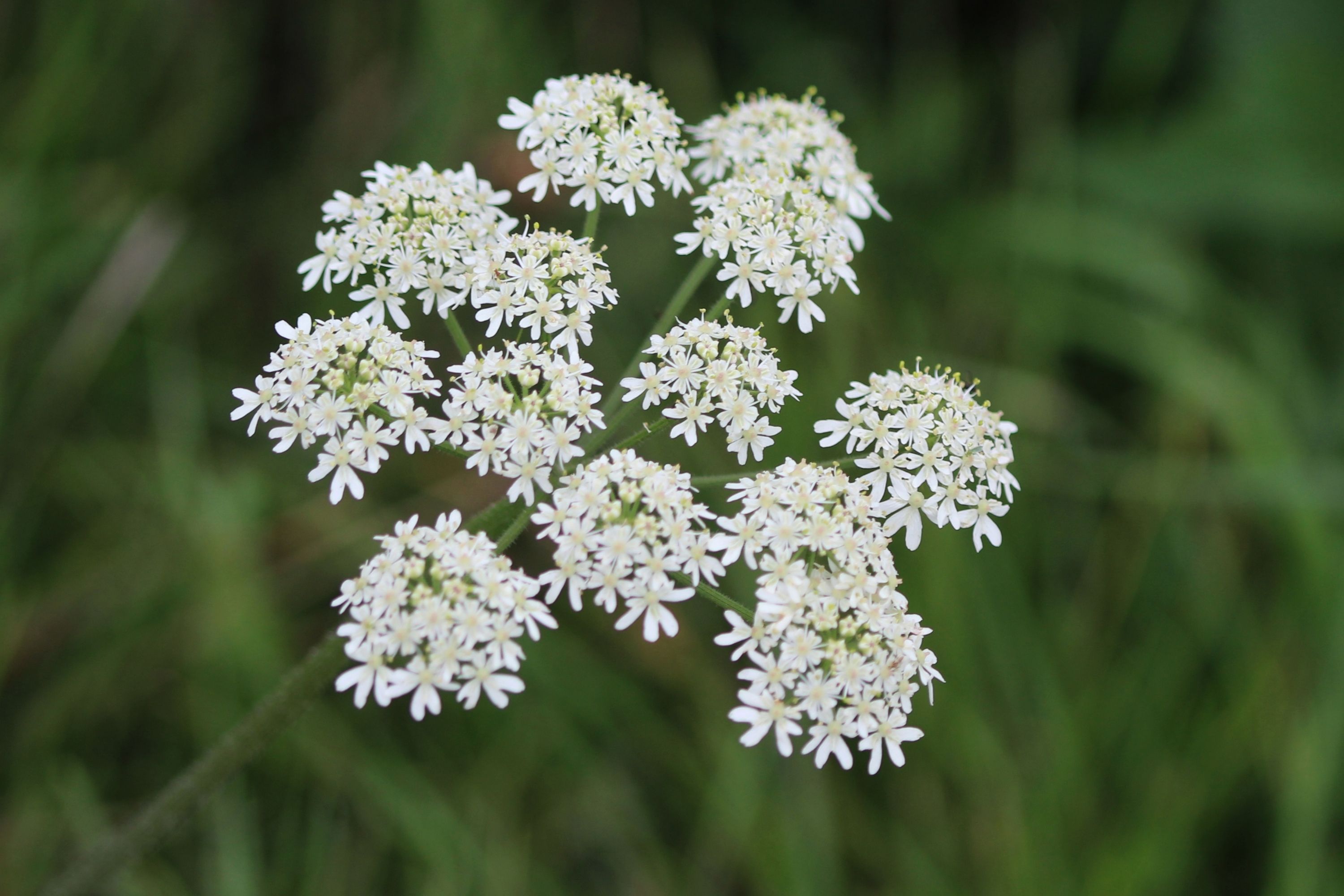Cow parsley
(Anthriscus sylvestris)

Description
Anthriscus sylvestris, commonly known as cow parsley or wild chervil, is a flowering plant native to Europe and Asia. It belongs to the Apiaceae family, which includes other well-known plants such as carrots, parsley, and dill. Anthriscus sylvestris is a biennial or short-lived perennial herb that grows in a wide variety of habitats, including woodland edges, hedgerows, meadows, and along roadsides. This article will provide an in-depth look at the characteristics, uses, and cultivation of Anthriscus sylvestris. Taxonomy and Etymology The scientific name of cow parsley, Anthriscus sylvestris, comes from the Greek words "anthriscos," which means "toothed" and "sylvestris," which means "of the woods." It was first described by Swedish botanist Carl Linnaeus in his seminal work, Species Plantarum, in 1753. Cow parsley is also known by several other common names, including wild chervil, keck, and Queen Anne's lace. Description Anthriscus sylvestris typically grows to a height of 60-100 cm (24-39 in) and has an upright, branching stem that is hollow and slightly ridged. The leaves are fern-like and divided into numerous small, toothed segments. They are arranged alternately along the stem and are usually hairless. The flowers of cow parsley appear in large, flat-topped umbels in late spring to early summer. The individual flowers are small and white, with five petals and five stamens. They are followed by small, oval-shaped fruits that are about 5-8 mm in length. Distribution and Habitat Cow parsley is native to Europe and western Asia but has been introduced to other parts of the world, including North America, where it is considered an invasive species in some areas. It grows in a wide variety of habitats, including hedgerows, meadows, woodland edges, and along roadsides. It prefers moist soils and partial shade but can also tolerate full sun. Uses Cow parsley has a long history of medicinal and culinary uses. The young leaves and stems can be eaten raw or cooked and have a mild, sweet flavor similar to carrots or parsley. They are rich in vitamins and minerals, including vitamins A and C, calcium, and iron. The seeds of cow parsley can also be used as a spice, with a flavor similar to anise or fennel. In traditional medicine, cow parsley has been used to treat a variety of ailments, including digestive problems, respiratory infections, and skin conditions. However, it is important to note that there is limited scientific evidence to support these claims, and some parts of the plant can be toxic in large quantities. Cultivation Cow parsley is relatively easy to grow and can be propagated from seed or by division of established plants. It prefers moist, well-draining soil and partial shade but can also tolerate full sun. Sow the seeds in early spring or late summer, and keep the soil moist until they germinate. Once established, cow parsley can self-seed and spread quickly, so it is important to keep it in check to prevent it from becoming invasive. Conclusion Anthriscus sylvestris, also known as cow parsley or wild chervil, is a versatile and useful plant that has been valued for centuries for its culinary and medicinal properties. Although it can be invasive in some areas, it is relatively easy to grow and can provide a valuable source of food and medicine in the right circumstances. As with any plant, it is important to understand its characteristics and potential risks before cultivating or using it.
Taxonomic tree:







